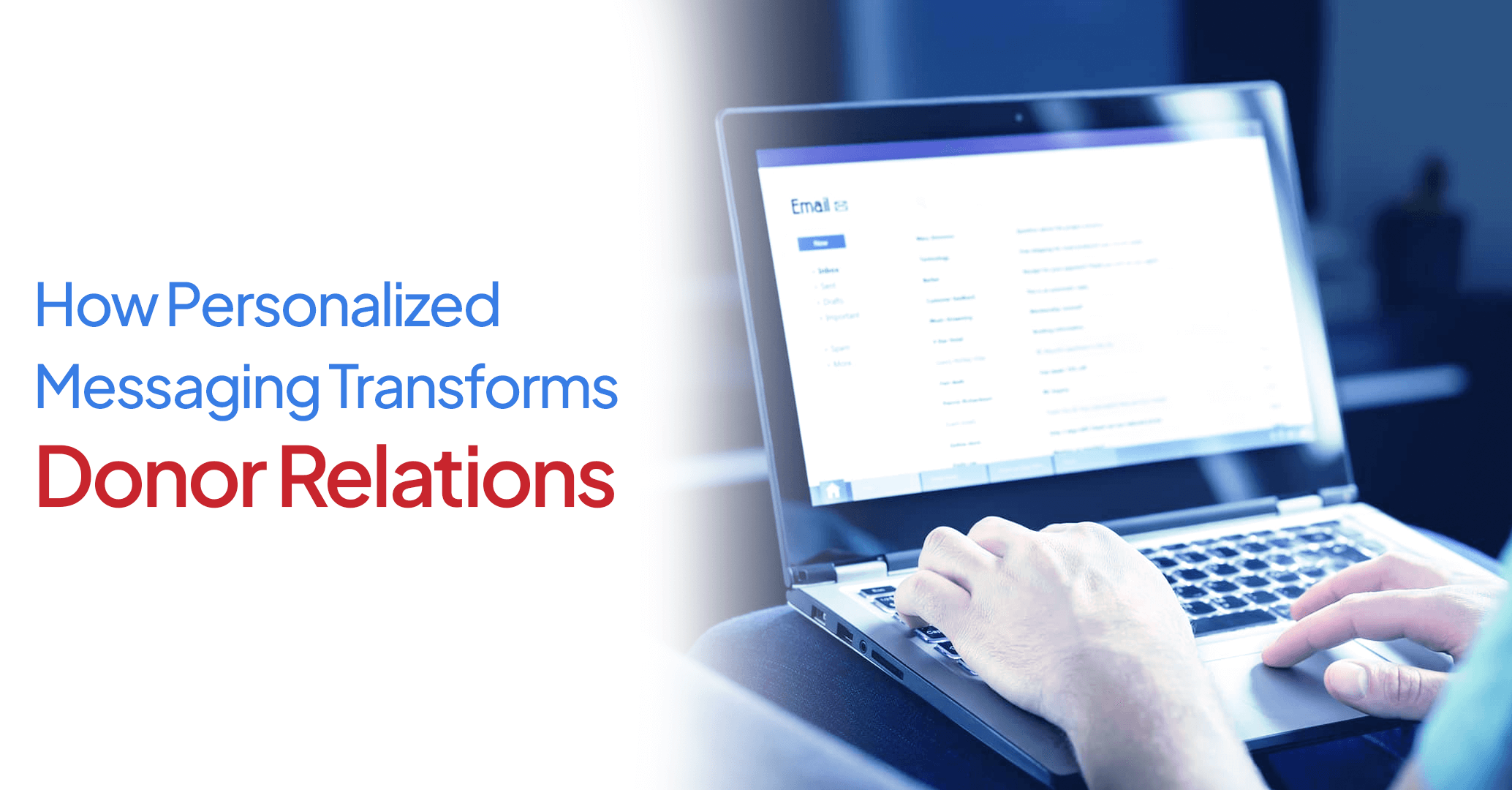Every donation, regardless of the size, makes an impact. But how can we show people exactly how their contribution is changing lives or advancing a particular cause? That’s where personalized messaging comes in. By sharing stories that are tailored to a donor’s interests and showing them how their support helps our mission, we create a sense of ownership and inspire more generosity.
The Power of Personalization
Personalization isn’t just using someone’s name in an email; it’s about understanding what motivates them, what they value and what causes them to be most passionate about. When donors feel like you truly understand them, they’re more likely to respond positively, engage actively with your organization and continue their giving long term. Personalized messaging taps into the emotional connection that drives philanthropy as well as creates a feeling of belonging and reinforces the belief that each contribution matters.
Segmentation: The Key to Targeted Communication
To personalize messages effectively, you must first segment your audience. This means grouping donors together based on shared traits such as characteristics, behaviors or interests so that you can send them messages that resonate with their unique preferences and concerns. For example, you might segment donors based on past giving history, demographic info or even specific programs they support within your organization.
Leveraging Data for Insights
Data is crucial when it comes to personalizing your communication strategy successfully. Analyzing things like giving history data, engagement metrics and demographic information doesn’t just help nonprofits better understand their supporters’ preferences and behavior patterns — it also helps lay the foundation for building personalized messaging strategies so they know exactly which recipients would find certain communications timely and interesting.
Multichannel Approach: Meeting Donors Where They Are
Donors today interact with organizations online across multiple channels such as email and social media but also offline through direct mailings or by attending in-person events. To provide an exceptional experience for each individual donor at each touchpoint, your personalized messaging must be multichannel. Doing this ensures that donors receive consistent and tailored content no matter how they engage with your organization.
Storytelling: Engaging Hearts and Minds
Don’t forget that personalization is also about the power of storytelling. Personalized stories that resonate with an individual donor’s interests and values can remind them how significant their giving is and how transformative their generosity has been. By using storytelling to forge emotional connections, nonprofits can inspire continued support from their donor’s long term.
Automation and Scalability
While it might seem like a difficult task to personalize things for people, especially for big organizations with lots of donors. Technological advancements have made it more accessible and scalable than ever before. Platforms like Degree37 offer tools that streamline the process of segmenting information, creating messages, and getting them to the right people at the right time so that nonprofits can communicate personally with as many people as they need to without lose any quality or authenticity.
Real-Time Engagement and Responsiveness
Personalized communication is not so much a one-way road as it is a continuously moving conversation, where you must listen to and respond to your donor’s wants and needs. By using real-time engagement data and analytics, non-profits can observe their interactions with donors. Then, through this process they can measure how interested the donor was in what they sent them.
If the organization decides that there is a more useful approach or what they had been doing just wasn’t working well enough, then now is when they would make that change. This means staying flexible, listening to feedback and quickly addressing any concerns or newfound interests to cultivate continued interest in your message.
Building Long-Term Donor Loyalty
The real power behind personalized messaging is its ability to develop long-term donor loyalty when done right. When supporters feel valued by an organization that seems like it knows exactly who they are and what they’re looking for in this world (as well as feels connected to its mission), then they are far more likely to stay committed over time.
They’ll talk about the cause more when asked about it, continue giving money towards projects longer than anyone could reasonably expect them too — all because these messages made them feel like an active part of the team rather than just someone watching from the outside.
Measuring Success and Refining Strategies
Measuring personalized messaging’s effectiveness is important for all successful marketing or fundraising ventures. Nonprofits can improve their approaches by tracking key performance indicators (KPIs) like open rates, click-through rates, donation amounts, and donor retention rates. These metrics help them gauge the effectiveness of their personalization strategies and optimize them effectively using data-driven decisions.
Ethical Considerations and Donor Privacy
Nonprofits should take care not to violate donor privacy while trying to enhance donor relations with personalized messaging. Although it offers great potential, nonprofits must ensure that they are collecting and utilizing donor data in an ethical and transparent manner rooted in industry best practices.
They should also follow any relevant regulations regarding the use of private information. Building trust with donors will require clear communication about how their data is collected and used, as well as providing them with opt-out options when possible. This will help maintain a healthy relationship between the donor and the organization.
Final Thoughts
Personalized messaging is no longer just a luxury in nonprofit fundraising; it has become a necessity. If organizations don’t tailor communications to each unique interest, value, or giving history of its donors, they’ll find lesser connections forged by their own hands.
While personalization does demand careful planning supported by data-driven insights through ongoing optimization processes layered on top of strategic commitments, the rewards are well worth it. By embracing personalized messaging nonprofits can put themselves at the forefront of donor engagement, fostering lasting relationships that drive their missions forward and create positive change in the world.
